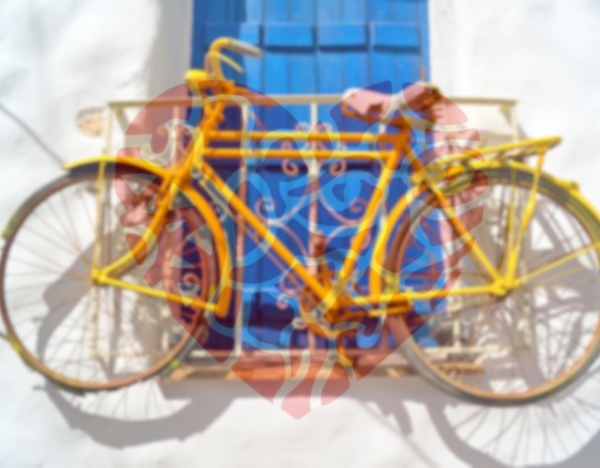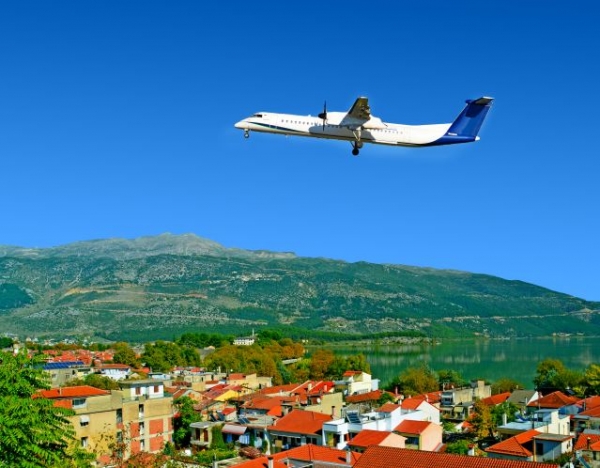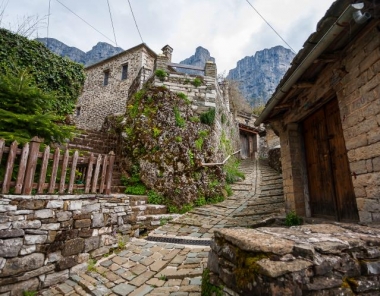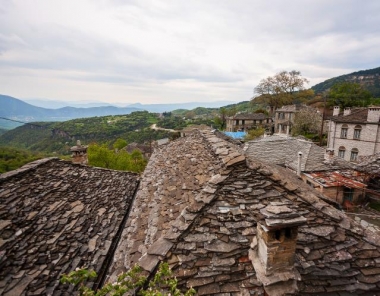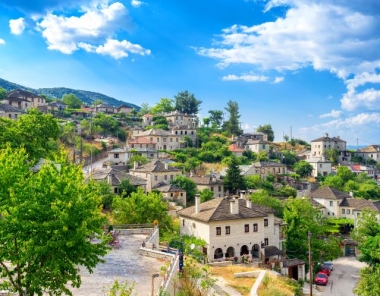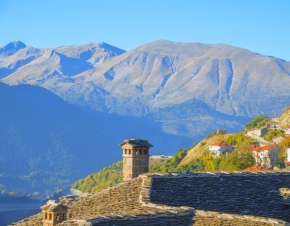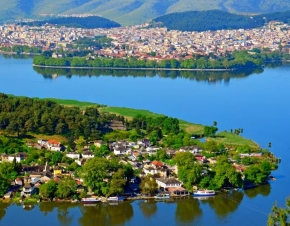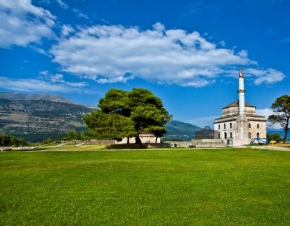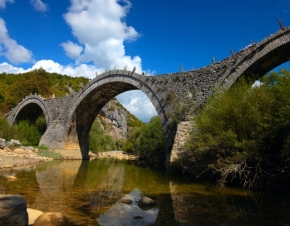The region of Ioannina is served by bus transportation (more info www.ktelioannina.gr). Particularly the city of Ioannina has a quite well network of urban transport (more info www.astiko-ioannina.gr). Throughout the region of Ioannina there are active taxis and car rental agencies.
You can get to Ioannina with flights to "King Pyrrhus'' airport of Ioannina.
"King Pyrrhus" airport of Ioannina is just 5 km away from the city of Ioannina and has a taxi rank and bus stop. More information can be found at 26510 83600.
Metsovo is in the eastern part of Ioannina.
Built on the slopes of mount Pindos, Metsovo is a beautiful traditional village that has recently developed into a great touristic destination. Besides its massive natural beauty, it also has remarkable ski areas attracting thousands of winter sports enthusiasts every year.
If you find yourself in Metsovo, you can visit the Folklore Museum of Metsovo and the Averof gallery. Once you get hungry, several quality choices for food,coffee or drinks await for you, together with excellent guest houses and hotels to stay overnight. If you have visited Greece before, you know that Greeks embrace tradition while innovating. As elsewhere in the country, here too a variety of local products is available for you to taste or buy. Do not miss the famous "Metsovone" cheese and the wonderful wine "Katogi Averof" (you can thank us later)!
Ioannina, also known as Giannina or Giannena is the largest city not only of the wider region of Ioannina, but also of the entire Epirus, with over 110,000 residents. Ioannina has a rich cultural tradition and remarkable beauty ; lake Pamvotis which is also known as Ioannina lake adds to that a dreamlike sensation.
There are so many things to see and do in Ioannina that you will definitely wish that days lasted over 24 hours. Start with a walk to the impressive castle of Ioannina, where you will have the chance to visit the Municipal Ethnographic Museum of Ioannina and the Byzantine Museum of Ioannina. Leaving the castle, do not miss the Archaeological Museum of Ioannina and right after, head to Lake Pamvotis and the island located in its center. There, you will admire the traditional village and the Ali Pasha Museum, which is dedicated to the man that governed the city during the Ottoman occupation. Take the small boat to enjoy the idyllic scenery and upon your return to the city, you will find several quality dining options. Taverns, mezedopoleia (traditional greek places where small food plates are served with ouzo or tsipouro) and restaurants have to offer a variety of delightful tastes, together with cafes and bars for a cup of coffee and drinks.
Once night falls, you have the chance to experience the amazing nightlife of Ioannina or select one of the excellent hotels and guest houses for a good night's sleep. Your next morning can be dedicated to trips! You can choose among short tours in Perama Cave, the archaeological site at Dodona, the Pavlos Vrellis Museum of Greek History and Wax Effigies or the nearby villages of Zagorohoria.
There are so many things to do in Ioannina, that you will definitely want to come back!
Evidence shows that the region of Epirus has been inhabited since the Palaeolithic era.
It was around 1300 BC, when the Molossians appeared in the region of Ioannina and dominated the area. Molossians, a strong nation with expansionist aspirations, acquired kinship with the kingdom of Macedon, by marrying the daughter of the king, Olympiad, with Philip II, king of Macedon. The fruit of this marriage was Alexander the Great, one of the greatest leaders the world has ever seen.
In the history of the region, the Molossian king, Pyrrhus, played a special role. Bringing together all the inhabitants of Epirus in 295 BC, he marched to Italy in an effort to expand his kingdom to the West. Pyrrhus had a series of victories, yet the losses suffered by his army were so large, resembling defeats, that he was forced to retreat. Any such victory in history is now called "Pyrrhic Victory".
In 168 BC Epirus was wholly conquered by the Romans, paying the price for supporting the Macedonians. Many cities were destroyed and their inhabitants were sold as slaves. During the Byzantine times, the area was fortified and the city of Ioannina was founded, being the second most important city in the Despotate of Epirus after Arta.
The region manages to secure a number of economic and other benefits from the Ottoman Empire and thus experiences major growth in trade, silversmith and goldsmith. Especially during the 17the and the 18the century, great spiritual development takes place. This is perfectly described by the popular saying "Ioannina, first in chariots, in money and in letters."
The region of Ioannina is finally liberated with the Balkan Wars in 1921-1923, and unifies with the rest of Greece. The Second World War is a period of fierce battles with both Italian and German troops. To make matters worse, the Greek Civil War that followed created --among others-- a major economic problem and forced several residents to emigrate.
Ioannina is located in Epirus, in western Greece.
With an area of 5000 square kilometers, it is the largest prefecture in Epirus and one of the largest in Greece. Ioannina borders Albania in the north, the region of Kastoria in the northeast, Grevena and Trikala in the east, Thesprotia in the west and in the south it borders two very beautiful Greek areas, that of Arta and Preveza.
Its capital is the city of Ioannina (or Giannena/Giannina), while other well known towns are Konitsa and Metsovo. A special mention should be made of the famous Zagorohoria, a cluster of 46 extremely scenic villages that are a top tourist destination.
The area of Ioannina is mostly mountainous. Among them, four stand out: mount Tymphi/Gamila (2497 m.), mount Grammos (2521 m.), mount Smolikas (2631 m.) and mount Lakmos/Peristeri (2294 m.) Ioannina is quite rich in water, as in its territory there are rivers Arachthos, Louros, Aoos, Kalamas, Voidomatis and Lake Pamvotis.
The climate in Ioannina is continental, with cold winters and frequent rainfalls that make the city slightly melancholic. Its population is approaching the 200 thousand inhabitants, many of whom are students or residents engaged in farming and agriculture. Tourism is another favored occupation in the region, as well as in Zagorohoria.

